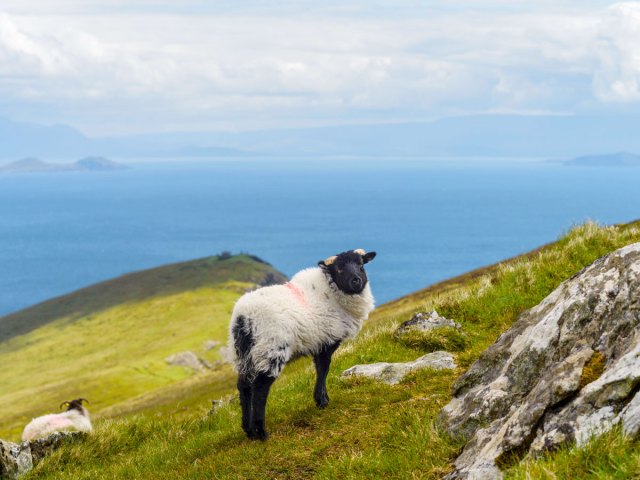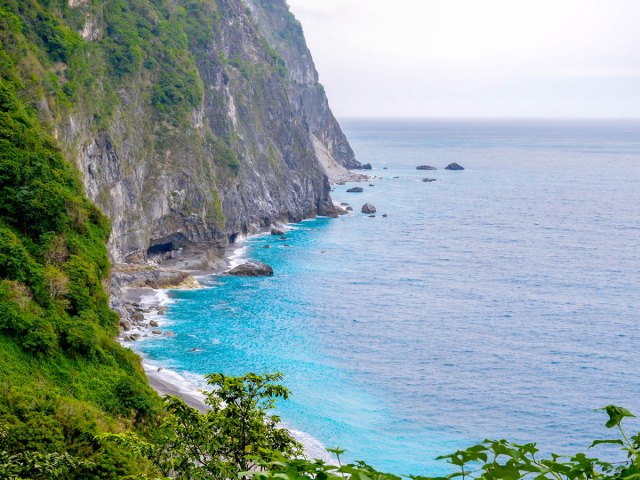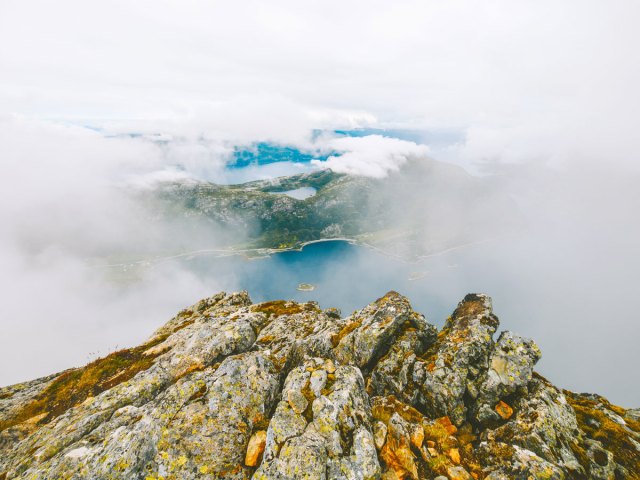Sea cliffs are steep, often vertical faces of rock and soil that rise above coastlines. They are created by geological actions such as sea erosion — when waves relentlessly crash against the shore, the base of a cliff erodes progressively until a distinct sheer face appears. Weathering forces the process to repeat itself, thus causing the sea cliff to retreat over time. Dramatic to look at and a photographer’s dream, sea cliffs also provide natural habitats to hundreds of species of flora and fauna around the world. Below, explore six of the tallest sea cliffs on the planet.
6. Slieve League – Ireland (1,972 Feet)

Slieve League (also known as Sliabh Lag) is home to some of the tallest sea cliffs in Europe, soaring nearly 2,000 feet over Ireland’s northwest Atlantic coastline in County Donegal. Visitors can drive almost all the way to the main lookout over the cliffs, Bunglas Viewpoint, and take in stunning views of Donegal Bay, Rathlin O’Birne Island, and the so-called “Giant’s Chair and Desk” — which, according to folklore, belonged to the giant Finn McCool.
Hikers can also explore routes such as One Man’s Path and Pilgrim’s Path. They cross land once traversed by Christian pilgrims, who consider the cliffs to be sacred. Be sure to stop by the Slieve League Cliffs Centre to learn about local history and legends or arrange a guided tour of the area.
5. Croaghaun – Ireland (2,257 Feet)

Just a few hundred feet taller than Slieve League, Croaghaun boasts the tallest sea cliffs in Ireland. They occupy the northern side of Croaghaun Mountain, which towers over the western edge of the remote and windswept Achill Island. The vertical rock faces stretch for around 11 miles along the island’s Atlantic coastline.
Part of the mysticism that surrounds Croaghaun is that the cliffs are only accessible by foot or boat. A hike to the top takes between two and five hours, depending on the route and individual fitness levels. Keem Beach marks the start of the shortest (yet still challenging) trail. The reward for reaching the summit are views of the nearby Benmore cliffs, Achill Head promontory, far-reaching deep blue seas. Many include a stop here while journeying on the Wild Atlantic Way, a popular 1,600-mile coastal tourism trail.
4. Qingshui Cliff – Taiwan (2,408 Feet)

Qingshui Cliff is a layered rock formation consisting of marble and gneiss, a high-grade metamorphic rock. It’s the tallest of a 13-mile-long stretch of sea cliffs that hug Taiwan’s Pacific shores within Taroko National Park. In 1953, the breathtaking cliffs were designated as one of Taiwan’s “Eight Wonders.”
One of the best ways to appreciate this area is to drive along Suao-Hualien Highway, which features vegetation-clad cliffs on one side and a sheer drop into the Pacific Ocean on the other. Scenic lookouts provide the chance to stop and appreciate the enormity of the cliffs, which reach nearly 2,500 feet above the sea. Another option is to walk the short Chongde Trail to more observation points and spot the lithophyte plants that grow in the cracks and crevices along the way.
3. Cape Enniberg – Faroe Islands (2,474 Feet)

For intrepid explorers, a hike to the summit of Cape Enniberg is at the top of the list of adventures in the remote and rugged Faroe Islands, a territory of Denmark. Carved over centuries by the wind and rain, this enormous volcanic sea wall marks the northernmost tip of both Viðoy Island and the Faroes archipelago.
A full-day journey to the cliffs starts with a hike up 2,759-foot Mount Villingadalsfjall, the islands’ third-tallest peak, before continuing to the edge of Cape Enniberg. The soaring heights and surrounding icy waters will make you feel as if you’re at the edge of the world. Those who prefer a more laid-back visit can experience the cliff and island on a boat tour departing from Klaksvik, on the neighboring island of Borðoy.
2. Hornelen – Norway (2,821 Feet)

Looming over the vast fjords and islands of Norway’s southwestern coastline, Hornelen is the tallest sea cliff in Europe. Historically utilized as a navigational point for passing ships, the imposing landmark is also associated with Norwegian folklore, which says that witches gather here for the summer solstice and to rest when traveling to nearby Bloksberg mountain. Another legend states that King Olav Tryggvason once scaled the entire rock face unaided.
Traditionally, the route to the summit was via a demanding hike across moorland and rocky terrain. However, the new Hornelen Via Ferrata, which opened in 2023, now offers guided tours climb to varying heights of the cliff. Whichever adventure you choose, you’ll get wondrous views of Norway’s emblematic fjordland.
1. Kalaupapa Cliffs – Hawaii (3,900 Feet)

According to the Guinness World Records, the world’s highest sea cliffs are found on the northern coastline of Hawaii’s Molokai island. The Kalaupapa Cliffs form part of the Kalaupapa National Historical Park, an area of jaw-dropping scenery that includes everything from volcanic craters and crater lakes to lush valleys and rain forests. The cliffs themselves appeared between 1 to 1.5 million years ago, when a northern portion of the island gave way and fell into the sea.
Once reachable via mule rides, sections of the cliffs today are accessible on self-guided tours. Visitor numbers are controlled to protect the park residents, who are the descendants of a Hansen’s disease colony banished to the Kalaupapa Peninsula by King Kamehameha V. Less than 10 miles to the east are the Haloku Sea Cliffs, the site of some of the tallest waterfalls in the U.S.
More from our network
Daily Passport is part of Optimism, which publishes content that uplifts, informs, and inspires.























